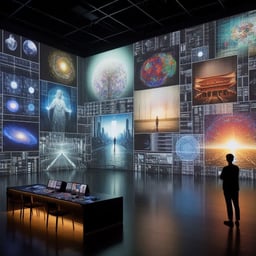I personally am a fan I find it to be like spaces except I can see them which makes switching between tasks smoother.
I don’t use it.
Any reason why?
Not the person you asked, but I haven’t found a use for it myself on my laptop. If I need to work on something I’ll just use an external monitor, so I haven’t really felt like I’ve needed what Stage Manager offers
Sometimes useful in certain workflows, sometimes not. It really depends on what I’m doing.
It could use some reworking, but I like the novel approach to window management that also abstracts between whole system WM and app-level WM, which macOS always did with Exposé. It’s much simpler than the more cumbersome approach I’ve seen with other WMs.
Yeah I think that’s probably the best explanation, simple to pick up for new users yet still provides a good amount of power for advanced users without getting overly complex.
Yeah, that’s a good way to put it. WMs in Linux, like with most features, kinda throw you in head-first into the deep end and can be overwhelming for novices.
Pop_OS’s window tiling system, on the other hand, is a little toned-down but can still be very powerful. From what I’ve seen, the new one coming in their Cosmic DE is even better, and features app-level abstraction in tabbing your tiled windows.
I tried out Pop_OS recently, functionality wise it’s pretty good, I just find the UI very unpleasant to look at unfortunately.
Well, it’s about to change in April, so you don’t have to worry about that for much longer
I’ve seen some screenshots of cosmic and I’m still not a fan of how it looks. Unless I’m not seeing the right screenshots?
It’s been going through a very rapid, alpha development phase, so some screenshots you have seen me have been incomplete or may have changed since. I really don’t know what you’ve looked at or when. So I can’t say, but you might try looking at it again.
Also, remember, the interface can be customized quite a lot.
Any idea when it’ll be released
I prefer having one big external monitor with all my windows on it as much as possible, so I’ve turned it off.
I’m having a hard time picturing this, can you take a screenshot of what you mean by all your windows on the second display?
Surely that ends up looking cluttered?
Not really. Usually it’s like 2 safari windows and a text editor next to each other. Imagine the screen split into thirds.
On smaller screens I use the feature where it puts two windows side-by-side that each fill half the screen.
What’s the layout Text editor full height and the two safari windows in half screen
I find it to be like spaces except I can
Spaces was really good. Like the OG Leopard version, it was really desktop peak performance.
Stage Manager kinda feels like what Windows does when you hover icons.
I think Stage Manager is great if you only have a single display. Sometimes I will use it at work (computer engineering) to keep my browser tabs with documentation, IDE, and email at arm’s reach. If I have access to my dual-monitor setup or an ultra-wide monitor, though, I prefer to keep everything visible or make minimal use of spaces.
I used it for like a week on my iPad, had no idea it was on macOS.
I leave it off, I don’t see much use for it when I can just have separate desktops open for what I need.
What do you use it for that you can’t do normally?
I like having similar tasks on the same workspace separated by mission control.
So I’d have my programming stuff, editor and browser, then maybe an issue tracker on workspace 1 with mission control to quickly switch between the two. I guess the dock might work for this use but it’s nicer to have the context of which apps are in each control space.
Then in workspace 2 I have my calendar and reminders on different mission control spaces so I don’t have to have them side by side and can benefit from a more full window size.
TLDR: minimise workspace count by grouping tasks of similar context.







